Abstract
1. The effects of severe arterial and primary tissue (carbon monoxide) hypoxia on cardiac output, arterial and right atrial pressures, heart rate and ventilation, have been studied in unanaesthetized normal rabbits, and in animals subjected to adrenalectomy, `sympathectomy' (guanethidine), adrenalectomy + `sympathectomy', and section of the carotid sinus and aortic nerves.
2. In both arterial and primary tissue hypoxia the sympathetic nerves play a more important part in the normal circulatory response than the adrenal medullary hormones.
3. Provided one adrenergic effector pathway remains intact, animals with intact chemoreceptors and baroreceptors tolerate both types of hypoxia well. Circulatory control during both types of hypoxia by means of sympathetic nerves alone produces relatively more peripheral vasoconstriction than is observed during reflex control through increased adrenal catecholamine secretion.
4. The occurrence of tonic sympathetic activity in animals with section of carotid sinus and aortic nerves permits maintenance of a high cardiac output during hypoxia but the arterial pressure is low and there is probably less selective distribution of blood flow to the periphery than in animals with normal reflex control.
5. Absence of any adrenergic activity in adrenalectomized and `sympathectomized' animals results in a gradual fall in cardiac output during prolonged hypoxia, after an initial small rise.
6. The results in guanethidine-treated animals suggest that the sympathetic discharge to the arterial chemoreceptors is a factor sustaining chemoreceptor discharge during prolonged arterial hypoxia.
Full text
PDF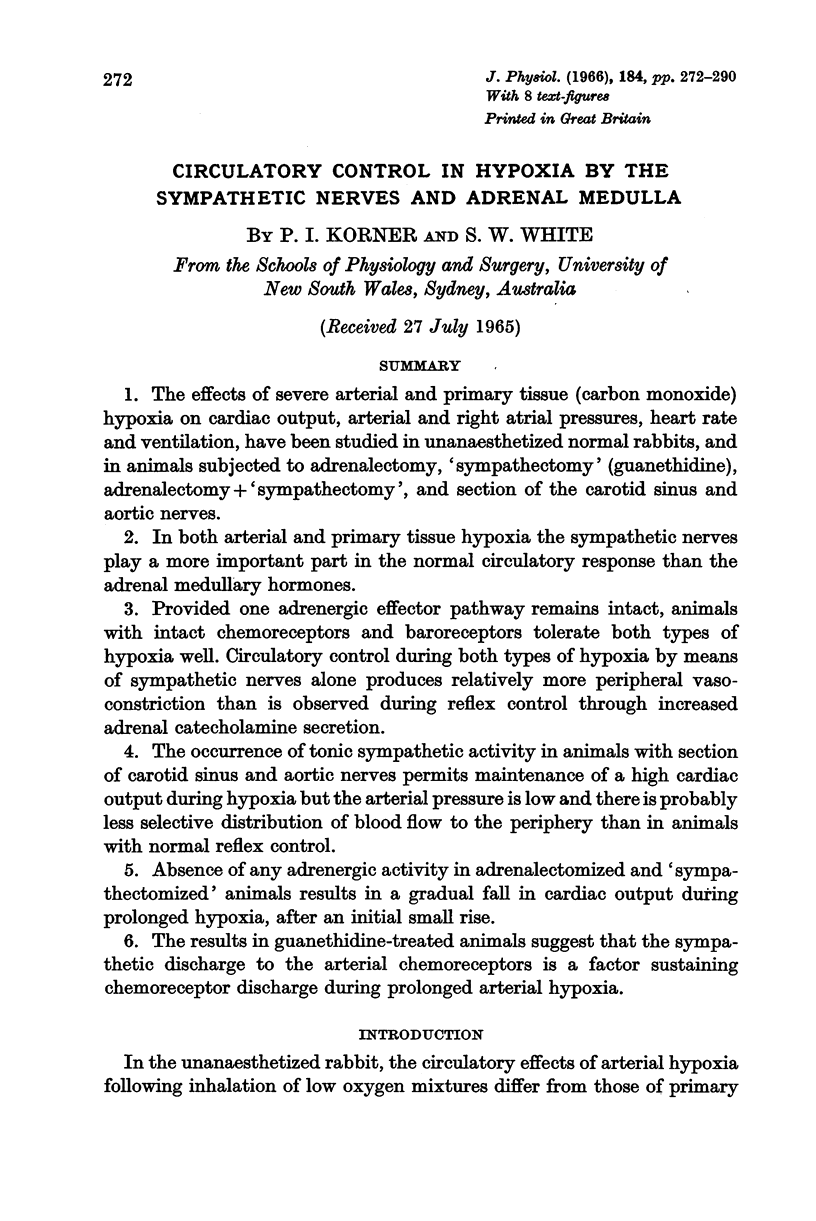

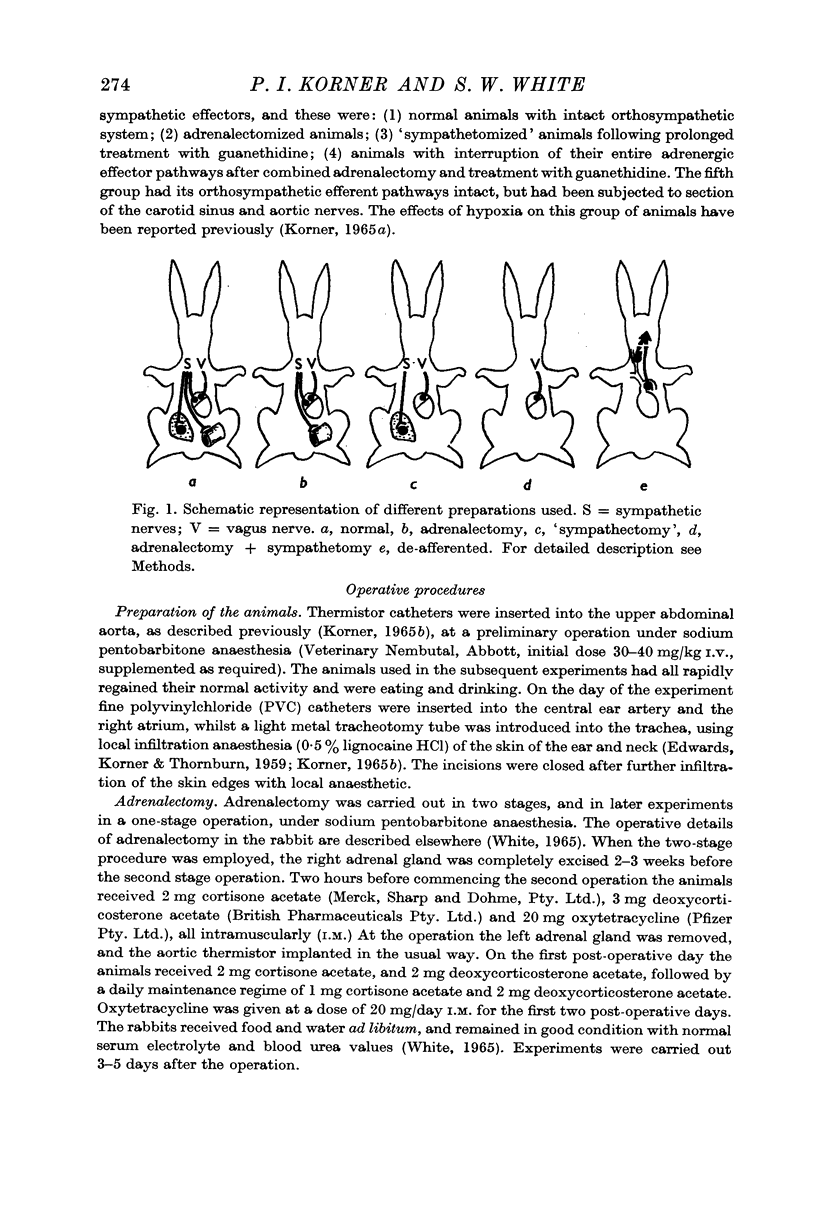
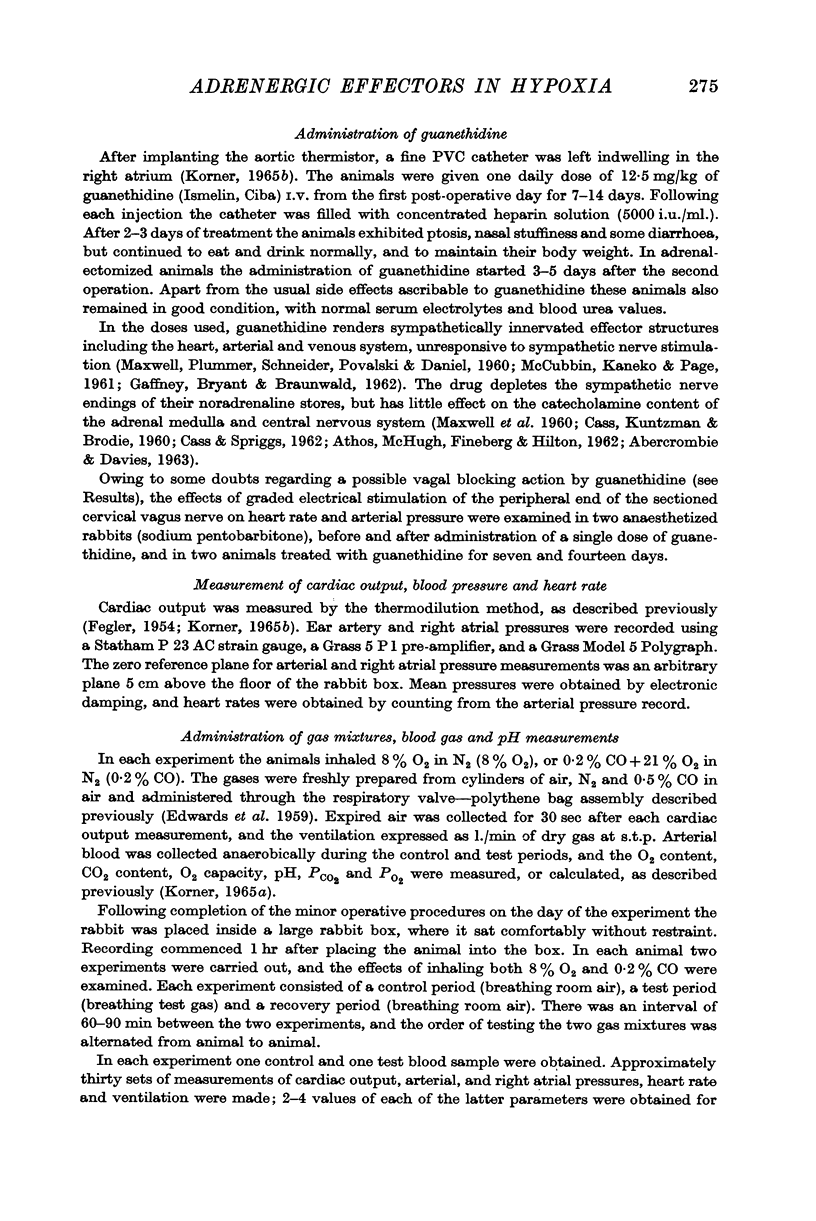
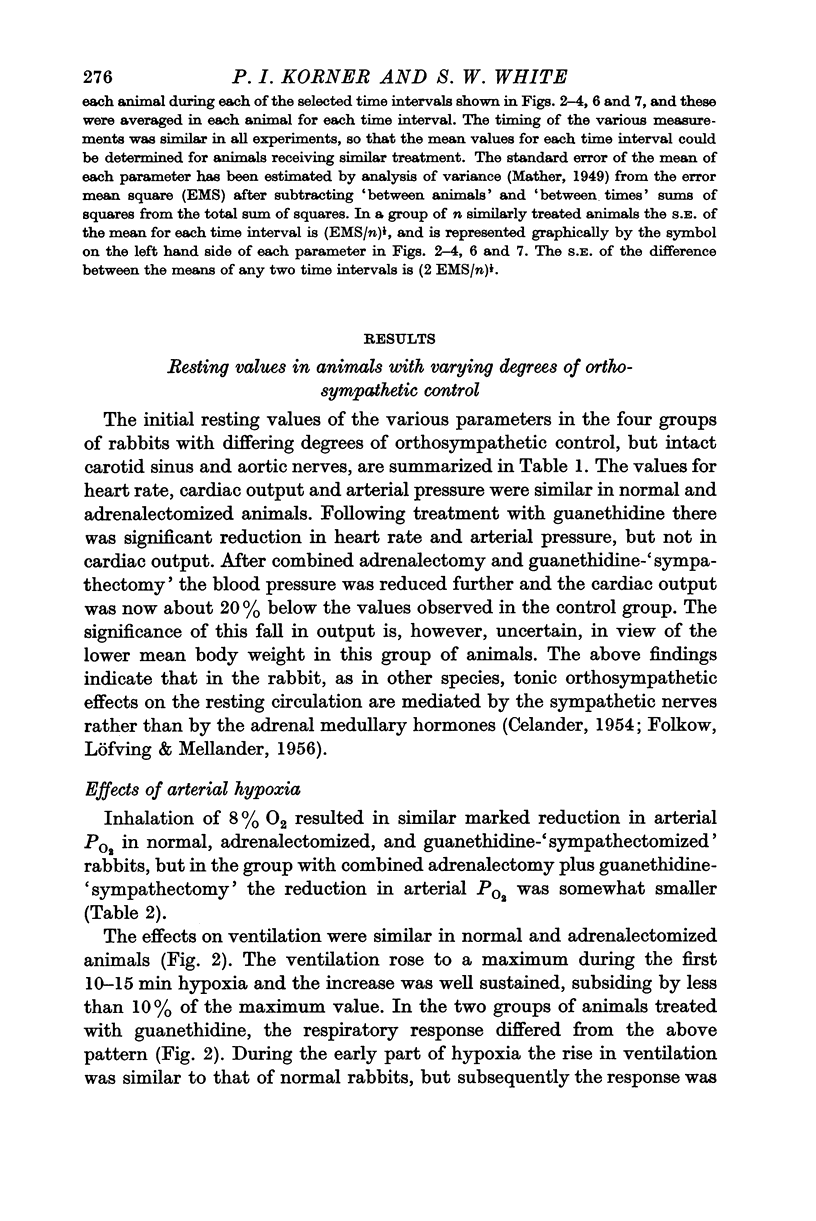
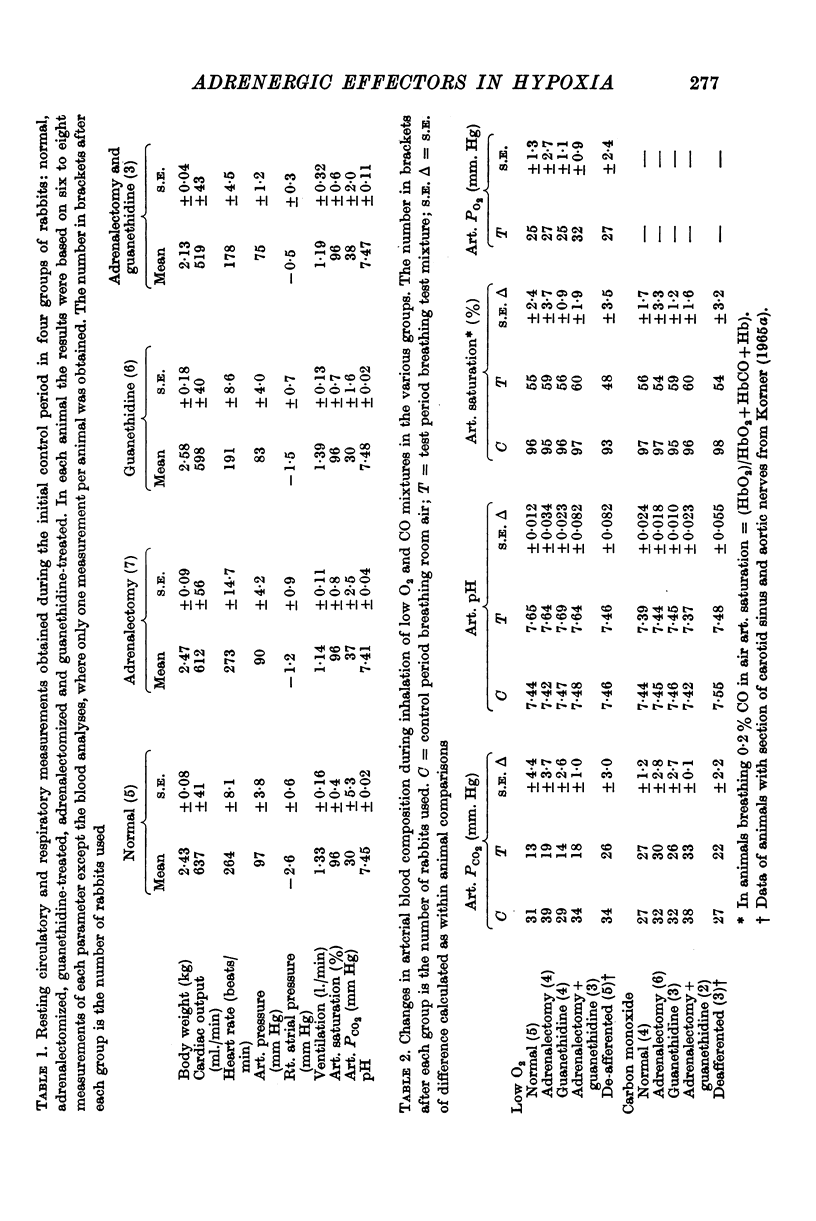
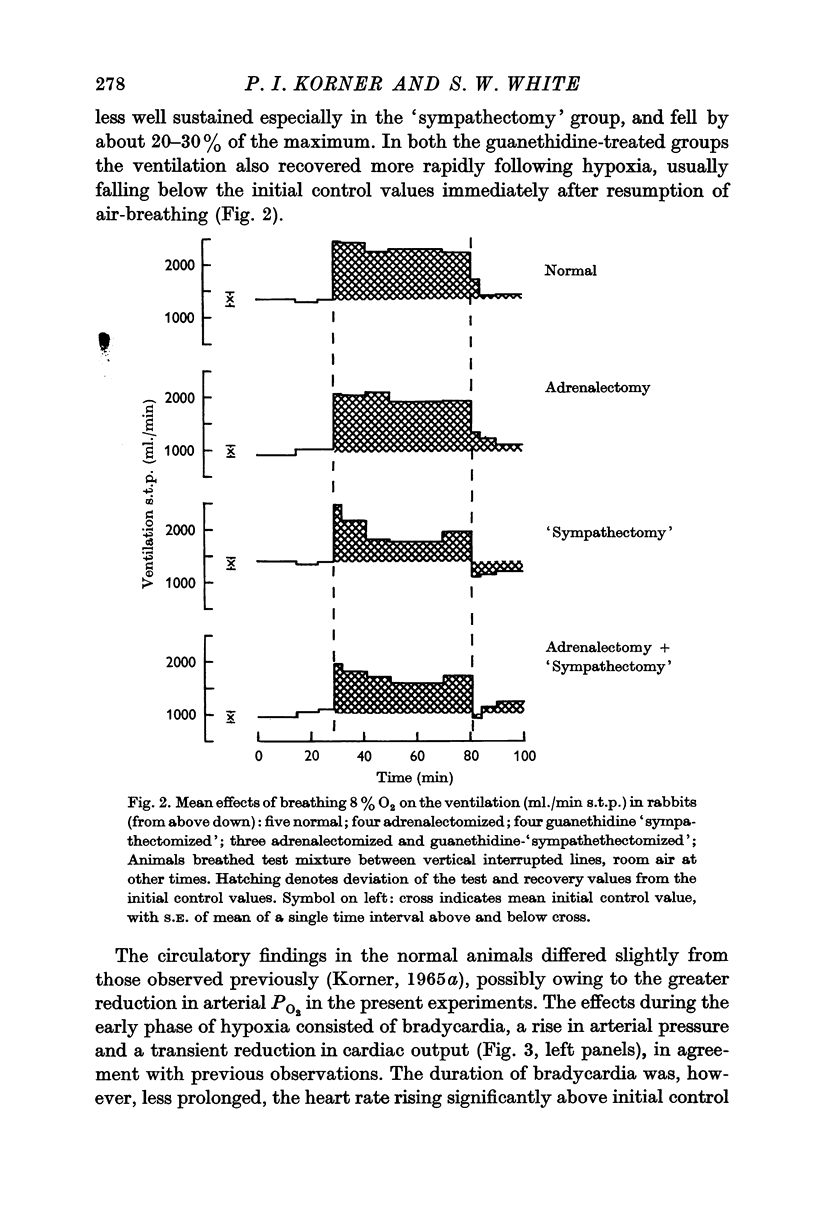


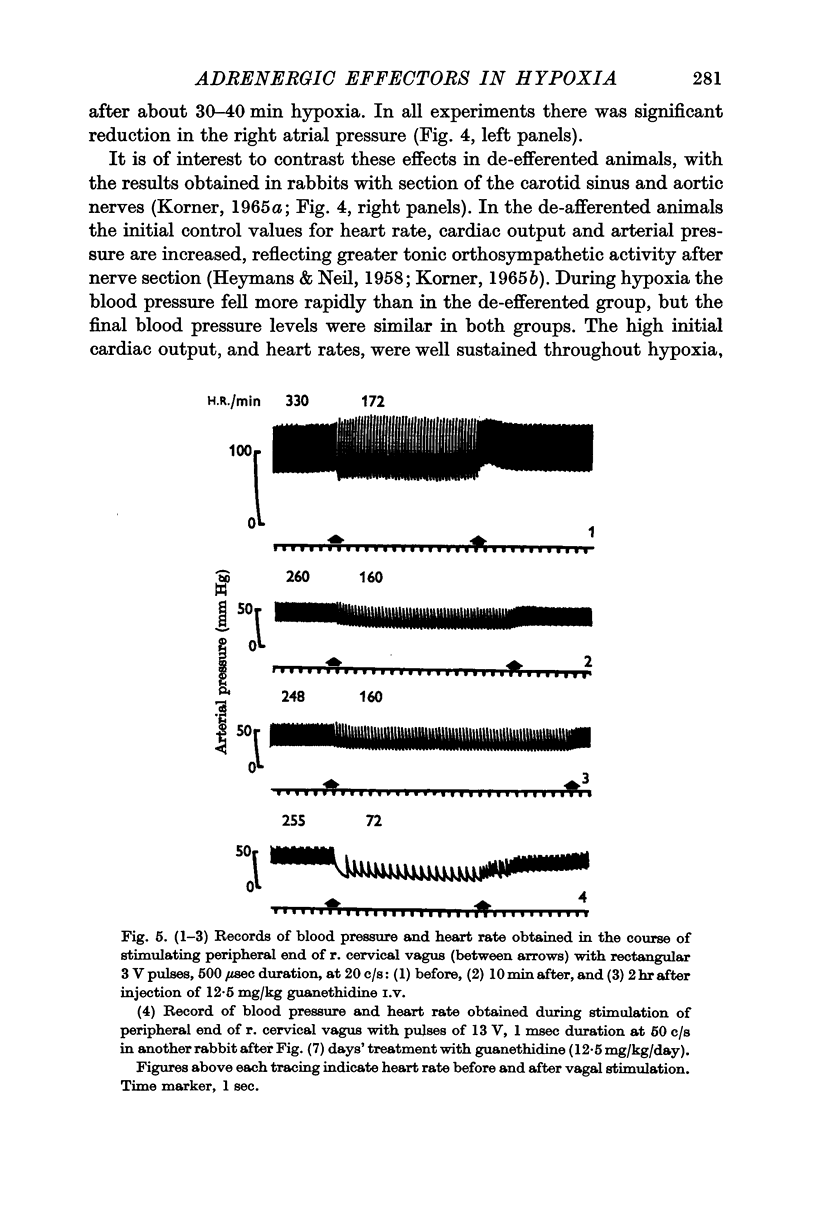
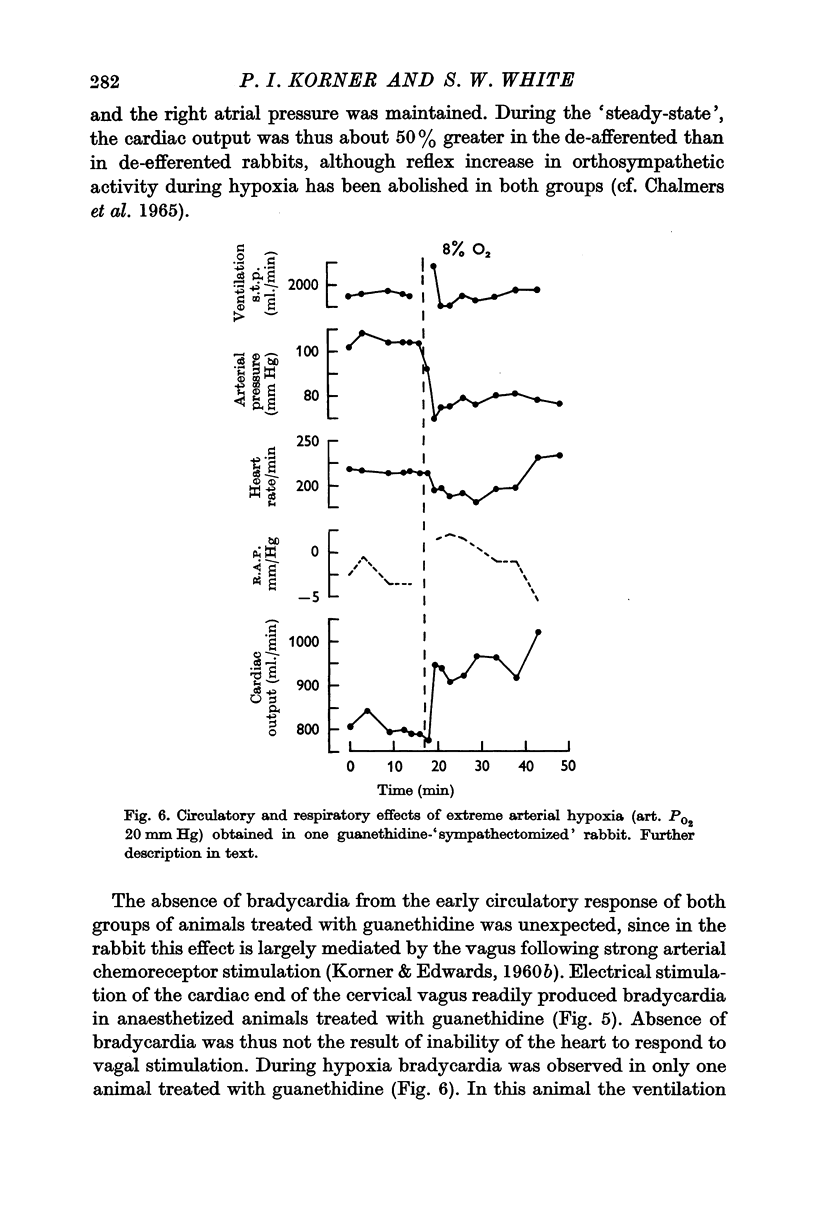
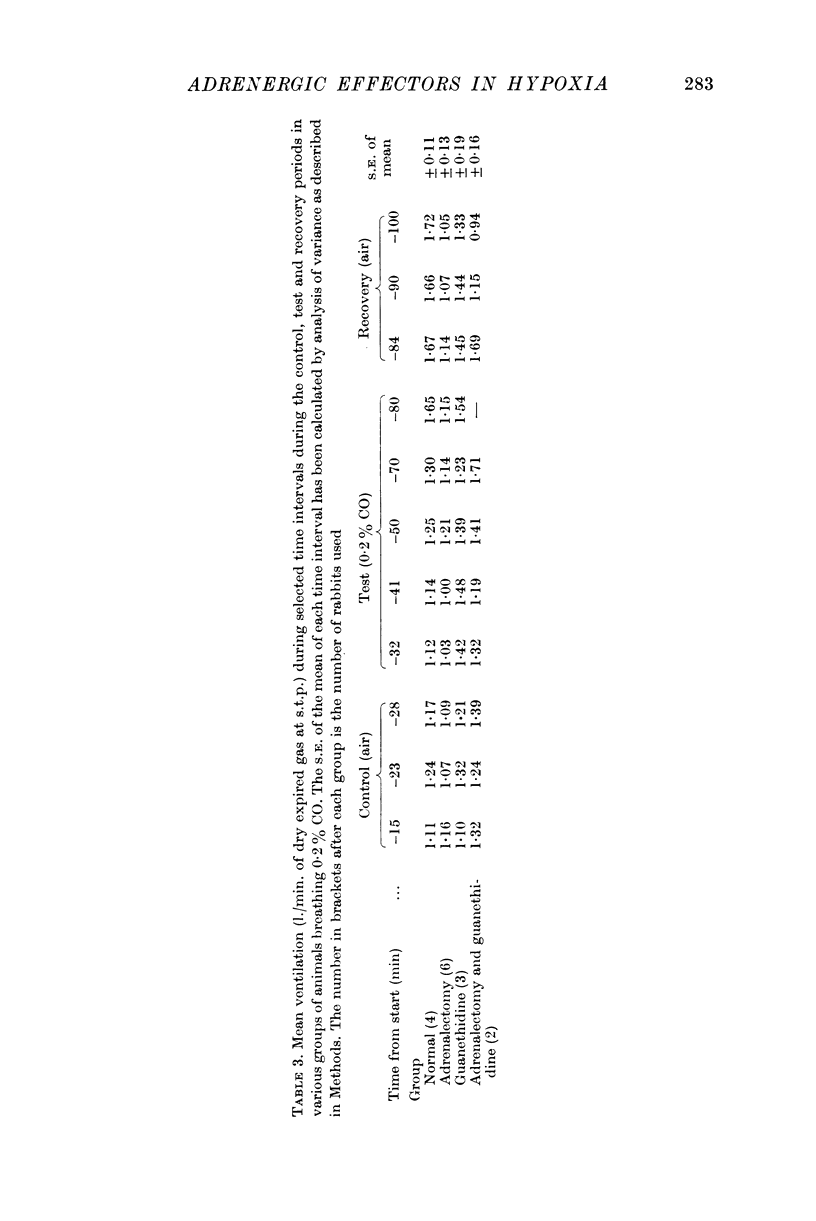
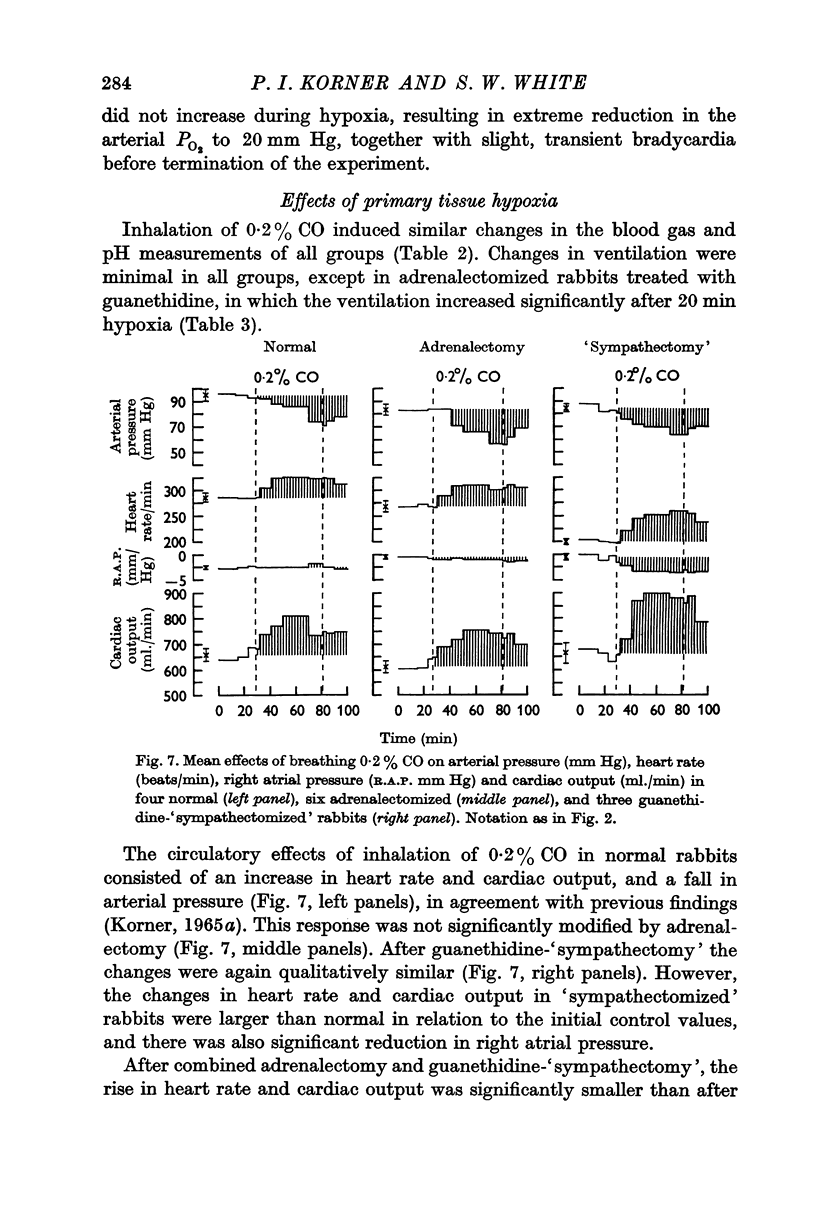
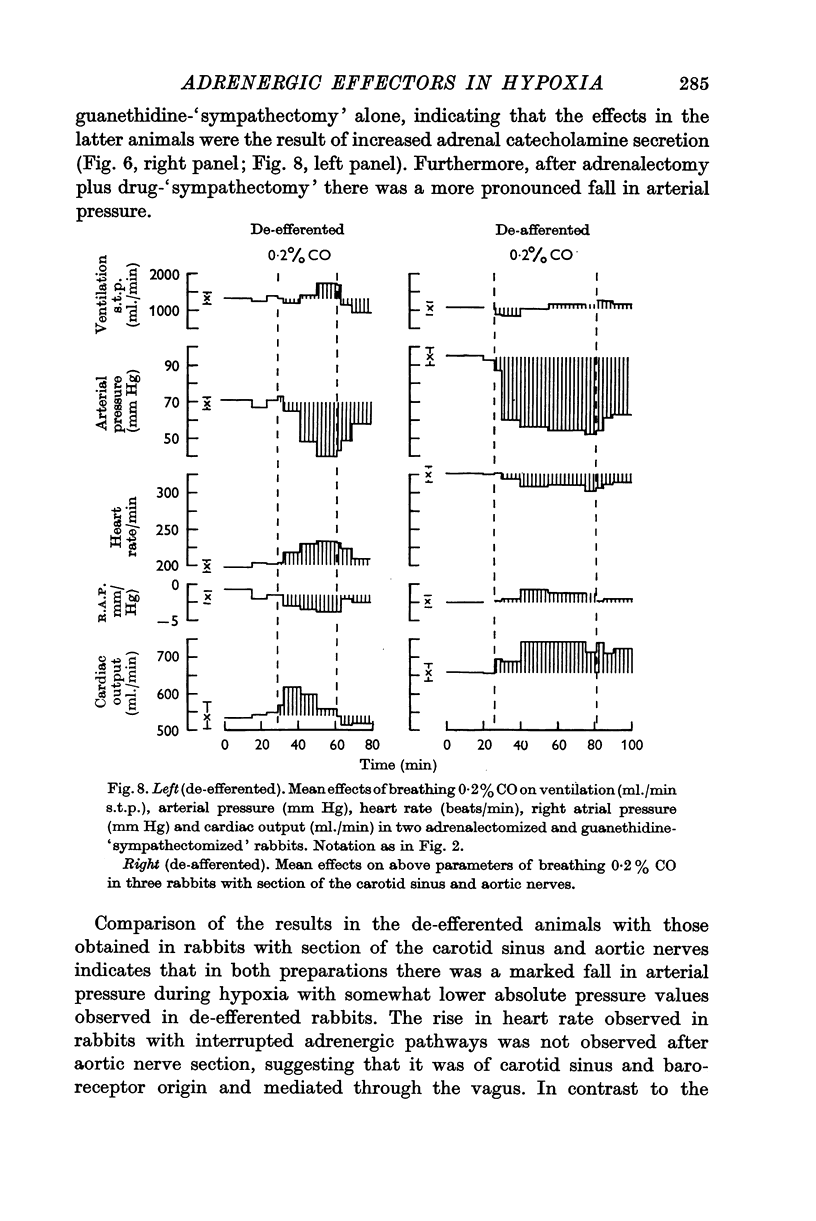
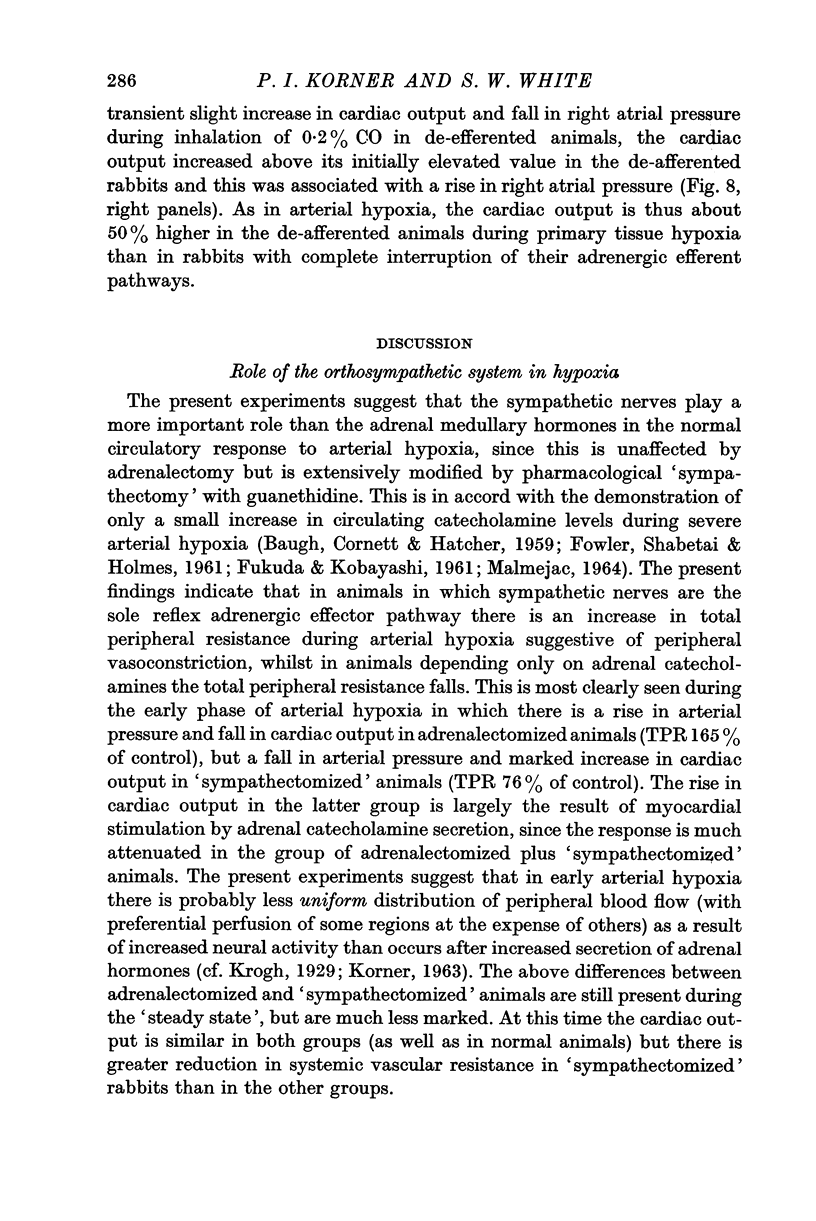
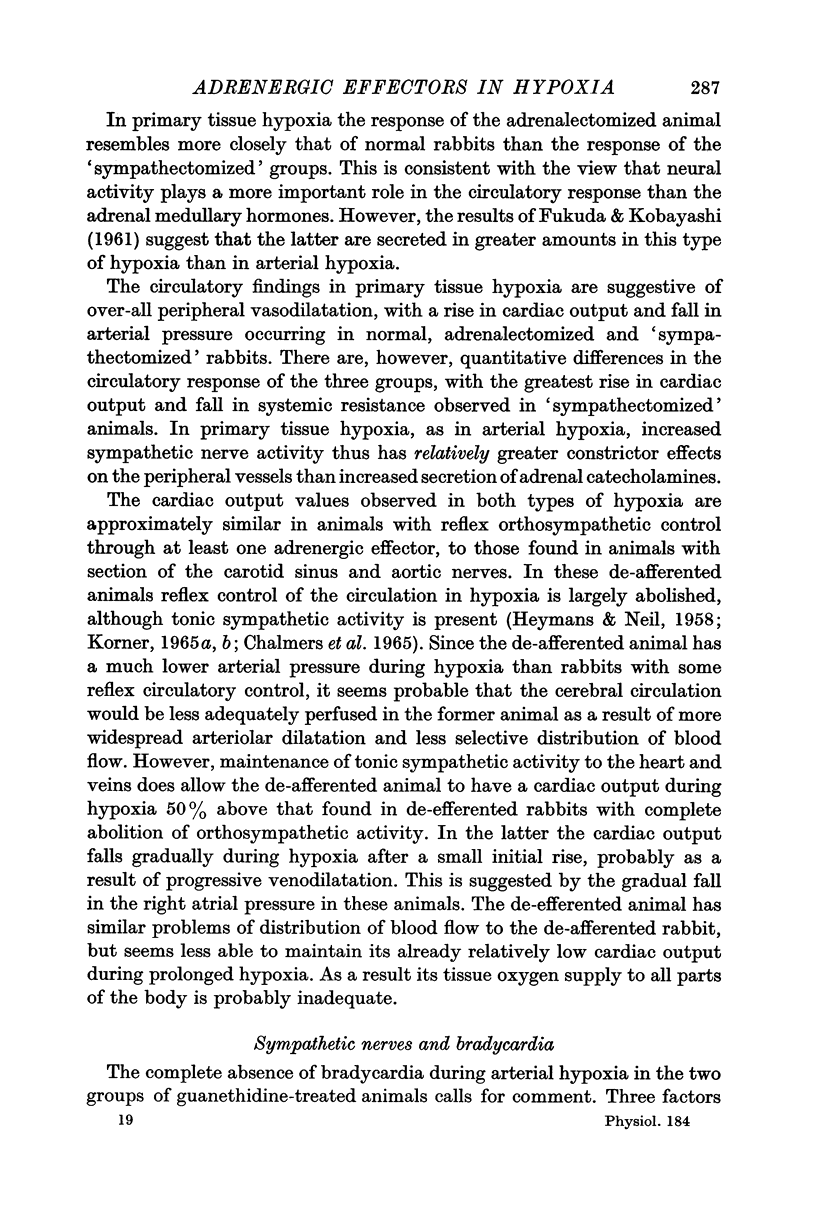
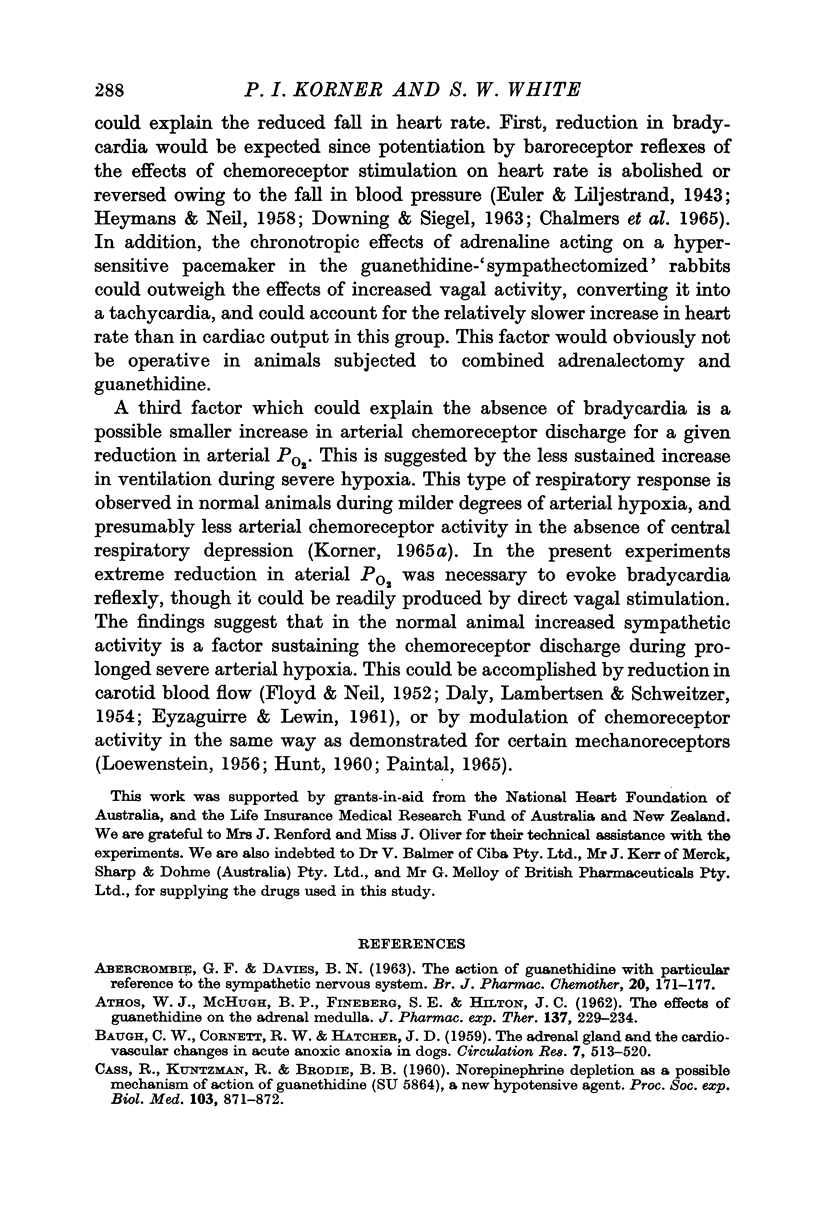
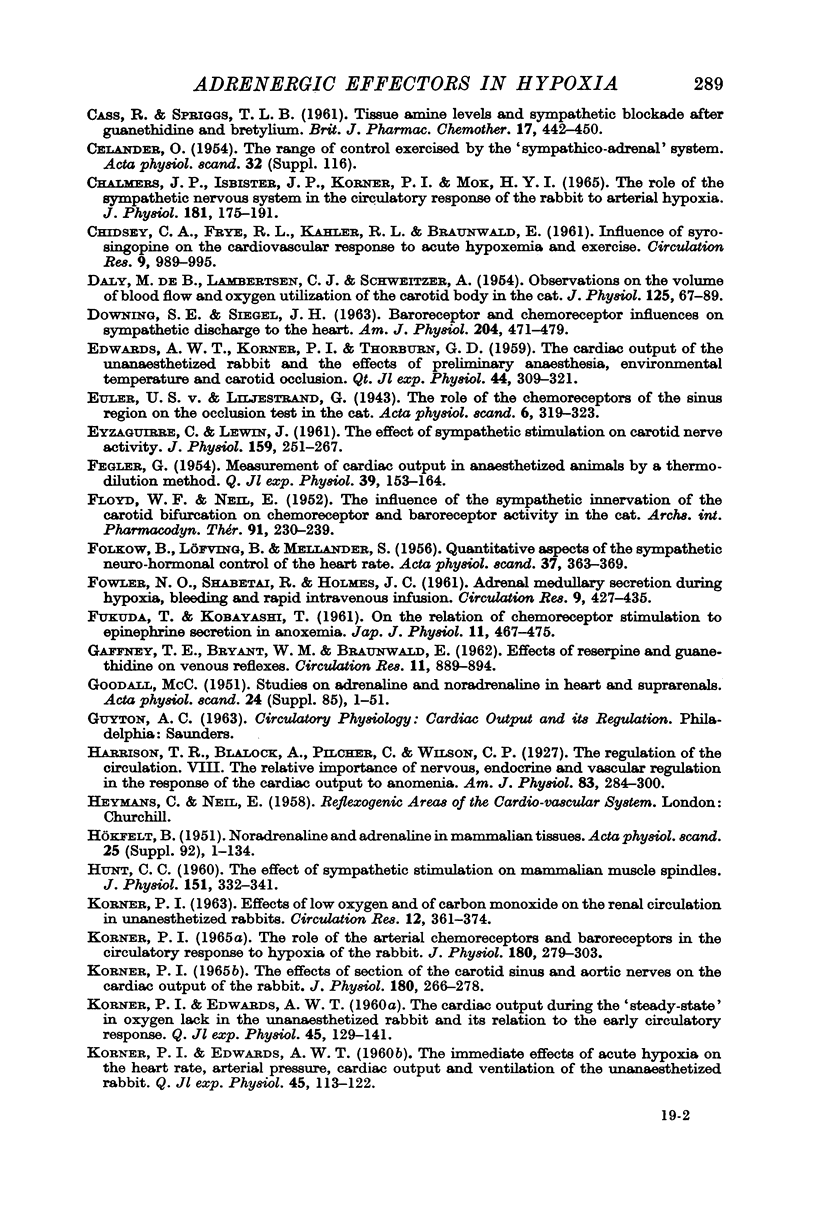

Selected References
These references are in PubMed. This may not be the complete list of references from this article.
- ABERCROMBIE G. F., DAVIES B. N. The action of guanethidine with particular reference to the sympathetic nervous system. Br J Pharmacol Chemother. 1963 Feb;20:171–177. doi: 10.1111/j.1476-5381.1963.tb01307.x. [DOI] [PMC free article] [PubMed] [Google Scholar]
- ATHOS W. J., McHUGH B. P., FINEBERG S. E., HILTON J. G. The effects of guanethidine on the adrenal medulla. J Pharmacol Exp Ther. 1962 Aug;137:229–234. [PubMed] [Google Scholar]
- BAUGH C. W., CORNETT R. W., HATCHER J. D. The adrenal gland and the cardiovascular changes in acute anoxic anoxia in dogs. Circ Res. 1959 Jul;7(4):513–520. doi: 10.1161/01.res.7.4.513. [DOI] [PubMed] [Google Scholar]
- CASS R., KUNTZMAN R., BRODIE B. B. Norepinephrine depletion as a possible mechanism of action of guanethidine (SU 5864), a new hypotensive agent. Proc Soc Exp Biol Med. 1960 Apr;103:871–872. doi: 10.3181/00379727-103-25702. [DOI] [PubMed] [Google Scholar]
- CASS R., SPRIGGS T. L. Tissue amine levels and sympathetic blockade after guanethidine and bretylium. Br J Pharmacol Chemother. 1961 Dec;17:442–450. doi: 10.1111/j.1476-5381.1961.tb01131.x. [DOI] [PMC free article] [PubMed] [Google Scholar]
- CHIDSEY C. A., FRYE R. L., KAHLER R. L., BRAUNWALD E. Influence of syrosingopine on the cardiovascular response to acute hypoxemia and exercise. Circ Res. 1961 Sep;9:989–995. doi: 10.1161/01.res.9.5.989. [DOI] [PubMed] [Google Scholar]
- Chalmers J. P., Isbister J. P., Korner P. I., Mok H. Y. The role of the sympathetic nervous system in the circulatory response of the rabbit to arterial hypoxia. J Physiol. 1965 Nov;181(1):175–191. doi: 10.1113/jphysiol.1965.sp007753. [DOI] [PMC free article] [PubMed] [Google Scholar]
- DE BURGH DALY M., LAMBERTSEN C. J., SCHWEITZER A. Observations on the volume of blood flow and oxygen utilization of the carotid body in the cat. J Physiol. 1954 Jul 28;125(1):67–89. doi: 10.1113/jphysiol.1954.sp005143. [DOI] [PMC free article] [PubMed] [Google Scholar]
- EDWARDS A. W., KORNER P. I., THORBURN G. D. The cardiac output of the unanaesthetized rabbit, and the effects of preliminary anaesthesia, environmental temperature and carotid occlusion. Q J Exp Physiol Cogn Med Sci. 1959 Jul;44:309–321. doi: 10.1113/expphysiol.1959.sp001403. [DOI] [PubMed] [Google Scholar]
- EYZAGUIRRE C., LEWIN J. The effect of sympathetic stimulation on carotid nerve activity. J Physiol. 1961 Dec;159:251–267. doi: 10.1113/jphysiol.1961.sp006806. [DOI] [PMC free article] [PubMed] [Google Scholar]
- FEGLER G. Measurement of cardiac output in anaesthetized animals by a thermodilution method. Q J Exp Physiol Cogn Med Sci. 1954;39(3):153–164. doi: 10.1113/expphysiol.1954.sp001067. [DOI] [PubMed] [Google Scholar]
- FLOYD W. F., NEIL E. The influence of the sympathetic innervation of the carotid bifurcation on chemoceptor and baroceptor activity in the cat. Arch Int Pharmacodyn Ther. 1952 Sep 1;91(1-2):230–239. [PubMed] [Google Scholar]
- FOLKOW B., LOFVING B., MELLANDER S. Quantitative aspects of the sympathetic neuro-hormonal control of the heart rate. Acta Physiol Scand. 1956 Nov 5;37(4):363–369. doi: 10.1111/j.1748-1716.1956.tb01372.x. [DOI] [PubMed] [Google Scholar]
- FOWLER N. O., SHABETAI R., HOLMES J. C. Adrenal medullary secretion during hypoxia, bleeding, and rapid intravenous infusion. Circ Res. 1961 Mar;9:427–435. doi: 10.1161/01.res.9.2.427. [DOI] [PubMed] [Google Scholar]
- FUKUDA T., KORAYASHI T. On the relation of chemoreceptor stimulation to epinephrine secretion in anoxemia. Jpn J Physiol. 1961 Oct 15;11:467–475. doi: 10.2170/jjphysiol.11.467. [DOI] [PubMed] [Google Scholar]
- GAFFNEY T. E., BRYANT W. M., BRAUNWALD E. Effects of reserpine and guanethidine on venous reflexes. Circ Res. 1962 Nov;11:889–894. doi: 10.1161/01.res.11.5.889. [DOI] [PubMed] [Google Scholar]
- HOKFELT B. Noradrenaline and adrenaline in mammalian tissues; distribution under normal and pathological conditions with special reference to the endocrine system. Acta Physiol Scand Suppl. 1951;25(92):1–134. [PubMed] [Google Scholar]
- HUNT C. C. The effect of sympathetic stimulation on mammalian muscle spindles. J Physiol. 1960 May;151:332–341. doi: 10.1113/jphysiol.1960.sp006441. [DOI] [PMC free article] [PubMed] [Google Scholar]
- KORNER P. I., EDWARDS A. W. The cardiac output during the steady-state in oxygen lack in the unanaesthetized rabbit and its relation to the early circulatory response. Q J Exp Physiol Cogn Med Sci. 1960 Apr;45:129–141. doi: 10.1113/expphysiol.1960.sp001451. [DOI] [PubMed] [Google Scholar]
- KORNER P. I., EDWARDS A. W. The immediate effects of acute hypoxia on the heart rate, arterial pressure, cardiac output and ventilation of the unanaesthetized rabbit. Q J Exp Physiol Cogn Med Sci. 1960 Apr;45:113–122. doi: 10.1113/expphysiol.1960.sp001449. [DOI] [PubMed] [Google Scholar]
- KORNER P. I. Effects of low oxygen and of carbon monoxide on the renal circulation in unanesthetized rabbits. Circ Res. 1963 Apr;12:361–374. doi: 10.1161/01.res.12.4.361. [DOI] [PubMed] [Google Scholar]
- Korner P. I. The effect of section of the carotid sinus and aortic nerves on the cardiac output of the rabbit. J Physiol. 1965 Sep;180(2):266–278. doi: 10.1113/jphysiol.1965.sp007702. [DOI] [PMC free article] [PubMed] [Google Scholar]
- Korner P. I. The role of the arterial chemoreceptors and baroreceptors in the circulatory response to hypoxia of the rabbit. J Physiol. 1965 Sep;180(2):279–303. doi: 10.1113/jphysiol.1965.sp007703. [DOI] [PMC free article] [PubMed] [Google Scholar]
- LOEWENSTEIN W. R. Modulation of cutaneous mechanoreceptors by sympathetic stimulation. J Physiol. 1956 Apr 27;132(1):40–60. doi: 10.1113/jphysiol.1956.sp005501. [DOI] [PMC free article] [PubMed] [Google Scholar]
- MALMEJAC J. ACTIVITY OF THE ADRENAL MEDULLA AND ITS REGULATION. Physiol Rev. 1964 Apr;44:186–218. doi: 10.1152/physrev.1964.44.2.186. [DOI] [PubMed] [Google Scholar]
- MAXWELL R. A., PLUMMER A. J., SCHNEIDER F., POVALSKI H., DANIEL A. I. Pharmacology of [2-(octahydro-1-azocinyl)-ethyl]-guanidine sulfate (Su-5864). J Pharmacol Exp Ther. 1960 Jan;128:22–29. [PubMed] [Google Scholar]
- MCCUBBIN J. W., KANEKO Y., PAGE I. H. The peripheral cardiovascular actions of guanethidine in dogs. J Pharmacol Exp Ther. 1961 Mar;131:346–354. [PubMed] [Google Scholar]
- NAHAS G. G., MATHER G. W., WARGO J. D., ADAMS W. L. Influence of acute hypoxia on sympathectomized and adrenalectomized dogs. Am J Physiol. 1954 Apr;177(1):13–15. doi: 10.1152/ajplegacy.1954.177.1.13. [DOI] [PubMed] [Google Scholar]
- PENNA M., SOMA L., AVIADO D. M. Role of carotid and aortic bodies in mediating the increase in cardiac output during anoxemia. Am J Physiol. 1962 Jul;203:133–136. doi: 10.1152/ajplegacy.1962.203.1.133. [DOI] [PubMed] [Google Scholar]
- SHEPHERD D. M., WEST G. B. Noradrenaline and accessory chromaffin tissue. Nature. 1952 Jul 5;170(4314):42–43. doi: 10.1038/170042b0. [DOI] [PubMed] [Google Scholar]
- TRENDELENBURG U. Supersensitivity and subsensitivity to sympathomimetic amines. Pharmacol Rev. 1963 Jun;15:225–276. [PubMed] [Google Scholar]


